 Facebook
Facebook
 X
X
 Instagram
Instagram
 TikTok
TikTok
 Youtube
Youtube
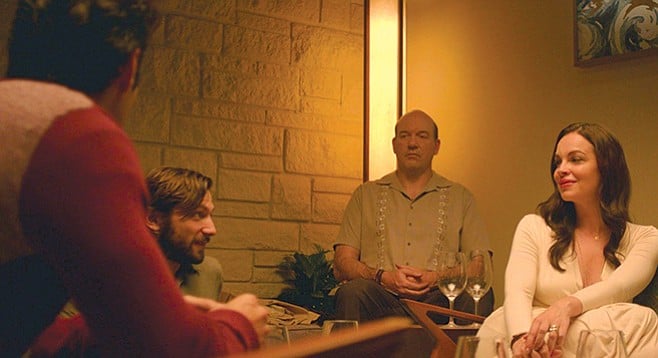
Too long since your gut’s had a good churning? The Invitation was sent out for a tight-knit group of friends (and a couple of hand-picked interlopers) to gather at a dinner party that initially had all the makings of a crisis intervention. Crisis, indeed! Arbitration? Not likely. It takes about 15 minutes to figure out the “why,” but hats off to director Karyn Kusama and screenwriting/marriage partner Phil Hay (he shares credit with Matt Manfredi) for encouraging me to want to stick around and see just how they were going to pull it off.
An African-American woman (Nathalie Emmanuel) is invited by a distant cousin to a swanky gathering of the clan. Before the night’s over, there will be blood. Gallons of it.
At any moment, this one-location shoot could have swerved in the direction of canned theater. Rely on Kusama’s telling arrangement of actors in the frame (particularly the background movements of John Carroll Lynch) to establish a character hierarchy. After that, the tension is all uphill until an unforeseen curtain shock slaps an extra coat of chills on all that’s come before. Lynch shares credit with a superb ensemble, but it’s his halcyon turn as a pitiable demon that unifies the action. In the shot or out of it, once onscreen, his presence permeates every ensuing frame. With Logan Marshall-Green and Tammy Blanchard.
Normally when I interview an artist, their best work is either three films up the road or four films behind them. John Carroll Lynch’s performance in the thrilling The Invitation, opening Friday at the Digital Gym, is that of a character actor at the top of their craft.
Lynch is the one soul I’ve yet to interview who’s worked with the Big Four: Scorsese, Eastwood, Albert Brooks, and Beetlejuice.
Scott Marks: I assume that John Lynch was taken when you first filed for a SAG card. What’s it like going through life with three names?
John Carroll Lynch: I chose John Carroll Lynch as my SAG name when I was 19 years old. I was working in D.C. and I got my SAG card by doing a first aid film for the Red Cross called Bleeding Control. They had a union contract. I called 911 — that’s what my character did on a construction site. One of my coworkers cut his femoral artery with a circular saw. The lead of the show was getting clean cloth and putting pressure on the wound as special effects put a pump with Karo syrup and peanut butter inside his fake femoral artery cut. While this was happening, I went offstage and waited for them to cover my call to 911.
SM: Riveting!
JCL: Yeah. Riveting stuff. Spoiler alert: He survives. Just in case you can’t find that particular opus.
SM: Like I’m not going to hit YouTube the second I hang up. (It’s not to be found.)
JCL (Laughing): I’m sure you will. I went to choose a name, and as you surmised, there was already a John Lynch: the Irish actor who starred in Cal. They wouldn’t let me have just an initial, so I ended up with all three names. It was fine until I realized people think three L’s together looks really weird, so they end up dropping one. I’ll have it on call sheets and various contracts where they spell the Carroll without the two L’s. Other than that, it’s been fine. It’s just a really big handle. My only caveat about it is, it’s a lot to write down. And it will certainly be challenging if I get paid ads and they have to find the right font. Especially if I ever have the good fortune of [working with] someone like Daniel Day-Lewis. I mean, we’d be in pica 10 by the time we finished.
SM: Before appearing in movies, you had an extensive theatrical résumé. You didn’t make your first movie — Bleeding Control doesn’t count — until you were 30. Could you tell me a bit about your background and why it took so long for you to make the leap to the big screen?
JCL: I never imagined I was going to do movies. My dreams were to become a regional theater actor. I got a Bachelor of Fine Arts degree at the Catholic University of America in D.C. and started working as an understudy at the Arena. (I think I was 20 when I did that Bleeding Control movie, fyi.) I got my Equity card at 24 at the Guthrie Theatre in Minneapolis and they asked me to join the company. I was content and happy working in the company there for a long while until I really started to feel as if I hit a bit of a glass ceiling artistically.
So, I went to New York for a brief period of time before getting an offer I couldn’t refuse to go back to the Guthrie, to do plays that I wanted to do. That year was also the year that the State of Minnesota started a Snowbate program to entice producers to come there. That worked out quite well for me because I ended up being cast in a series of films there, one of which was...the first one was Grumpy Old Men and then after that I did The Cure and Fargo, and then did five films in a row. Suddenly I was making a living as a film actor in Minnesota. That’s when I decided that maybe I should try movies out. With the support of my then-fiancée, I went to Los Angeles and started looking for work as an actor here.
SM: You’ve been married for going on 20 years. Kinahora, as we say in Ireland! Congratulations. That’s wonderful to hear, especially coming from someone in this business.
JCL: Thank you very much. I am extraordinarily grateful for the partner I’ve chosen, and that she’s chosen me.
SM: There’s always talk of not enough good roles in Hollywood, yet you seem to have had the pick of them. Last month audiences saw you play a pastor in Miracles From Heaven, and this month you take a much darker turn as Pruitt in The Invitation. How do you go about selecting a character to play?
JCL: The primary way one selects a character is they ask you to play it. That’s the first thing. (Laughing.) After that, it’s about figuring out whether or not you really want to do it. With those two characters, they came through different routes. With Miracles From Heaven, I had never worked with the director before, and I didn’t know the writer or the producers of the movie, but I did end up having a conversation with [director] Patricia Riggen after reading it and I enjoyed the fact that this faith-based movie really based itself on doubt. Her struggle with doubt is what’s most moving in the film. And Patricia didn’t want to skimp on the way the pain of life unfolds for us, so I really liked that about it.
The Invitation came through friends. I’ve known the writers for quite a few years and met [director] Karyn [Kusama] after [screenwriter] Phil Hay and she married and we became very good friends. They said, “We’d like you to read this character,” [which] they had written for me, and it was Pruitt. At first, you wonder why they... Well, that’s what you think of me. Okay! The other part is that both of those men are men of faith. They’re both people who have found an ethos that works for them and they’re willing to live it. And bring it to life in the world.
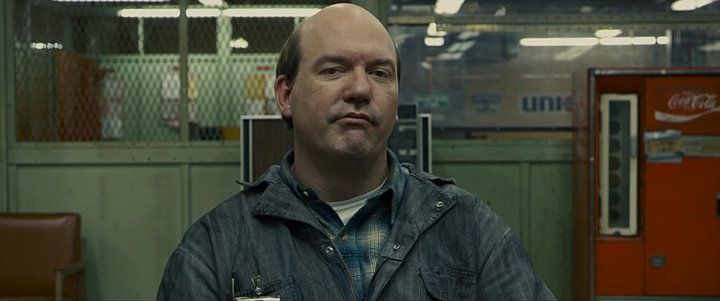
SM: It’s funny that you mention it because I was going to ask what it felt like getting a call and the voice on the other end of the phone says, “We’re casting for the Zodiac Killer and we think you have what it takes!”
JCL: When that happens, the people involved are some of the best at what we do and you’re simply honored to be considered for the project in any capacity. Arthur Leigh was a challenging part, and I was given nothing but support in terms of resources — video tapes, exhaustive historical research, both of Gray Smith's. There was tremendous support before we shot. Then to have the good fortune of sitting down in a jazz combo with Elias Koteas, Anthony Edwards, and Mark Ruffalo being orchestrated by David Fincher you really think to yourself how bad can this be?
We had such a tremendous time playing that scene. And subsequent with Jake [Gylenhaal] — I had played his father before in Bubble Boy and played his tormenting manager in The Good Girl — it was interesting to play his Moby Dick to my Ahab in the last scenes of Zodiac.
SM: Scorsese’s my man. There’s no other living filmmaker short of Jean-Luc Godard who I’ve learned as much from. Tell me something you learned during the making of Shutter Island.
JCL: I learned that he is a person who will… through all of the things he knows, through all of the experience he has, he is still searching and still vibrantly after something beyond the technical challenges, which are still of interest to him. He’s an artist who thinks of the film first and bringing it to life with his encyclopedic knowledge of film history. His frontal lobes don’t get in the way. He’s a gut filmmaker. He’s following impulse. Everything about the production is purely scheduled and thought out. It’s his vitality as a person that he brings to the work that’s an inspiration. To see someone that alive in work that he is by far a master at is impressive and humbling.
SM (Dabbing tears): Beautifully said. Thank you for that. If you had to pick one of your films that you really wanted to hit big and didn’t, which would it be? Tell me yours and then I’ll tell you mine.
JCL: Wow. I don’t like your answering order, but okay. I'm kidding!
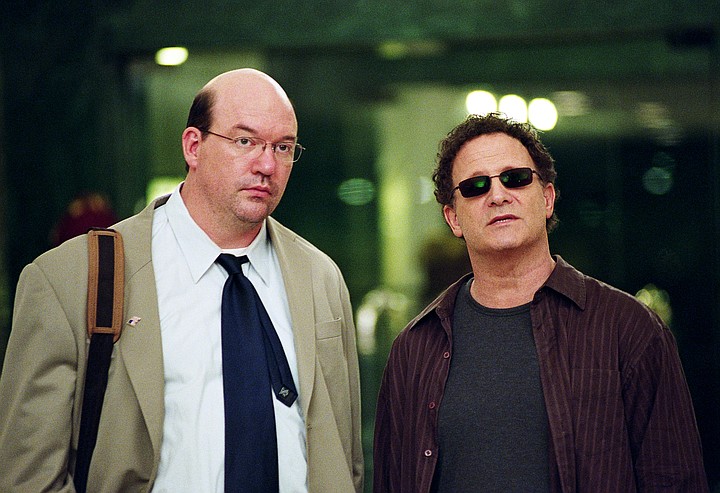
SM: Okay. I’ll go first with Looking For Comedy in the Muslim World.
JCL: Turns out we didn’t find any.
SM (Laughing): Shame on you, Mr. Lynch!
JCL: I so enjoyed making it and I think it’s a really funny movie. What was the other one?
SM: Believe it or not, Bubble Boy. I love the movie.
JCL: It’s a really underrated film. The circumstances… that’s where the surprise at the end of the movie got in the way. They were challenged by relentless negative press about them mocking a very severe autoimmune disease and that there are people in the country that have it and this picture was simply making fun of them with this big, splashy comedy.
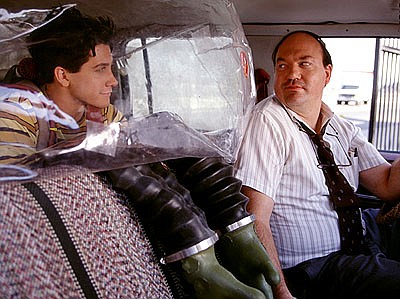
The whole point of the movie is that he doesn’t need the bubble. He just had a psychopathic protective mother. Swoosie Kurtz makes me laugh just thinking of her performance. She is extraordinarily funny.
SM: She sure is!
JCL: They had to defend a movie they didn’t make. You couldn’t tell the audience that he didn’t need the bubble. That would ruin the movie. When that movie holds up, it’s funny tomorrow. Put in a DVD or stream it and that movie is funny tomorrow. It gets funny from so many wonderful places.
SM: I’m also a big fan of Howard Stern. Didn’t you share screen time with performance artist, Beetlejuice?
JCL: I worked with Verne Troyer… I did come one day when Beetlejuice was working. We were chasing after the circus show. That was the one day we had together. But, no, I didn’t work with him.
SM: Back to Albert. Looking For Comedy in the Muslim World. is the greatest Bob Hope movie that Hope didn’t appear in.
JCL: That’s a perfect description. It is a ‘Road’ movie. (Laughing.) There’s no doubt about it. That’s exactly what it is.
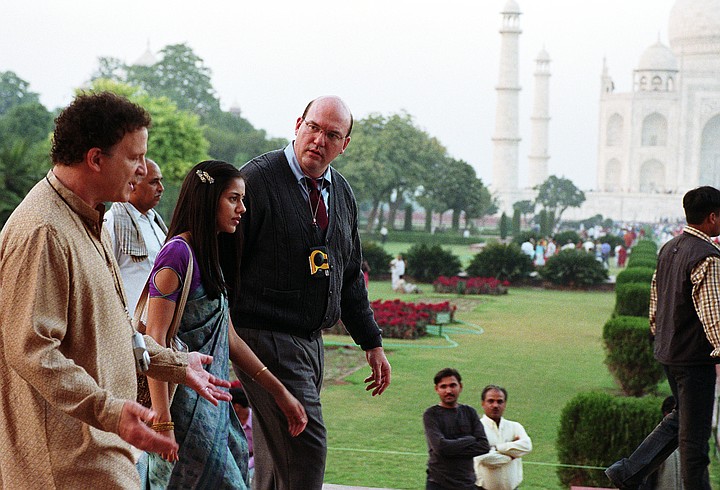
SM: Would you please settle a bet? A friend swears that Brooks never left American soil and that India was all done in a lab. I say it was shot on location. Who wins?
JCL: Under no circumstances. It was shot on location. I’ll tell you a story about that. They scouted the Taj Majal in midsummer. It was 135 degrees that day. There were six people — I’m exaggerating — at the Taj that day. They set it all up. They got the permits, they got permission, and it was very difficult to get permission to film at one of the world’s most historic sites.
We get there on the day of the shoot and there are 30,000 people there. We’ve got this long Steadicam shot as we walk by the Taj. He’s there and he misses it. (Laughing.) So we’re having that conversation and we had to have… there was a group of Indian children from a military school… boys, probably between the ages of 15 and 17… they were there on a school trip. I think there was some money that exchanged hands, but we had them cordoned off. What we saw was the Steadicam operator and 50 Indian military school students pushing back 5,000 people so we could do that shot. We kept doing it over and over again hoping to get a take where people didn’t look in the lens. We did that one shot over and over again all day in hopes that we would get it. But he was 100% there and 100% Albert.
An African-American woman (Nathalie Emmanuel) is invited by a distant cousin to a swanky gathering of the clan. Before the night’s over, there will be blood. Gallons of it.
SM: The impact Pruitt, your character in The Invitation, has on the film reminded me of Jimmy Conway in Goodfellas. Even though you’re not the lead, once you appear on screen your presence is felt in subsequent every frame. While researching a role such as this, where does one look to find such evil?
JCL: Inside the human heart. I believe that all of us are capable of hideous things. That’s why hideous things happen. It’s important that when I go about the process of agreeing to roles in which characters do terrible things that I find the humanity in that terrible thing. I don’t aggrandize it or make it something that people can push away. That’s what Karyn did in this film.
Pruitt is a character of pity as well as fear. That’s one of the elements that great horror has. I’ve recently done more straight horror — American Horror Story and to some degree The Walking Dead, although that’s not straight horror — than I ever have before. You feel terrified and feel pity and sadness for the monster, like the Frankenstein. I think that they do that in The Invitation. Everyone in the movie is understandably human and trying to deal with loss and responsibility in sometimes destructive ways.


Too long since your gut’s had a good churning? The Invitation was sent out for a tight-knit group of friends (and a couple of hand-picked interlopers) to gather at a dinner party that initially had all the makings of a crisis intervention. Crisis, indeed! Arbitration? Not likely. It takes about 15 minutes to figure out the “why,” but hats off to director Karyn Kusama and screenwriting/marriage partner Phil Hay (he shares credit with Matt Manfredi) for encouraging me to want to stick around and see just how they were going to pull it off.
An African-American woman (Nathalie Emmanuel) is invited by a distant cousin to a swanky gathering of the clan. Before the night’s over, there will be blood. Gallons of it.
At any moment, this one-location shoot could have swerved in the direction of canned theater. Rely on Kusama’s telling arrangement of actors in the frame (particularly the background movements of John Carroll Lynch) to establish a character hierarchy. After that, the tension is all uphill until an unforeseen curtain shock slaps an extra coat of chills on all that’s come before. Lynch shares credit with a superb ensemble, but it’s his halcyon turn as a pitiable demon that unifies the action. In the shot or out of it, once onscreen, his presence permeates every ensuing frame. With Logan Marshall-Green and Tammy Blanchard.
Normally when I interview an artist, their best work is either three films up the road or four films behind them. John Carroll Lynch’s performance in the thrilling The Invitation, opening Friday at the Digital Gym, is that of a character actor at the top of their craft.
Lynch is the one soul I’ve yet to interview who’s worked with the Big Four: Scorsese, Eastwood, Albert Brooks, and Beetlejuice.
Scott Marks: I assume that John Lynch was taken when you first filed for a SAG card. What’s it like going through life with three names?
John Carroll Lynch: I chose John Carroll Lynch as my SAG name when I was 19 years old. I was working in D.C. and I got my SAG card by doing a first aid film for the Red Cross called Bleeding Control. They had a union contract. I called 911 — that’s what my character did on a construction site. One of my coworkers cut his femoral artery with a circular saw. The lead of the show was getting clean cloth and putting pressure on the wound as special effects put a pump with Karo syrup and peanut butter inside his fake femoral artery cut. While this was happening, I went offstage and waited for them to cover my call to 911.
SM: Riveting!
JCL: Yeah. Riveting stuff. Spoiler alert: He survives. Just in case you can’t find that particular opus.
SM: Like I’m not going to hit YouTube the second I hang up. (It’s not to be found.)
JCL (Laughing): I’m sure you will. I went to choose a name, and as you surmised, there was already a John Lynch: the Irish actor who starred in Cal. They wouldn’t let me have just an initial, so I ended up with all three names. It was fine until I realized people think three L’s together looks really weird, so they end up dropping one. I’ll have it on call sheets and various contracts where they spell the Carroll without the two L’s. Other than that, it’s been fine. It’s just a really big handle. My only caveat about it is, it’s a lot to write down. And it will certainly be challenging if I get paid ads and they have to find the right font. Especially if I ever have the good fortune of [working with] someone like Daniel Day-Lewis. I mean, we’d be in pica 10 by the time we finished.
SM: Before appearing in movies, you had an extensive theatrical résumé. You didn’t make your first movie — Bleeding Control doesn’t count — until you were 30. Could you tell me a bit about your background and why it took so long for you to make the leap to the big screen?
JCL: I never imagined I was going to do movies. My dreams were to become a regional theater actor. I got a Bachelor of Fine Arts degree at the Catholic University of America in D.C. and started working as an understudy at the Arena. (I think I was 20 when I did that Bleeding Control movie, fyi.) I got my Equity card at 24 at the Guthrie Theatre in Minneapolis and they asked me to join the company. I was content and happy working in the company there for a long while until I really started to feel as if I hit a bit of a glass ceiling artistically.
So, I went to New York for a brief period of time before getting an offer I couldn’t refuse to go back to the Guthrie, to do plays that I wanted to do. That year was also the year that the State of Minnesota started a Snowbate program to entice producers to come there. That worked out quite well for me because I ended up being cast in a series of films there, one of which was...the first one was Grumpy Old Men and then after that I did The Cure and Fargo, and then did five films in a row. Suddenly I was making a living as a film actor in Minnesota. That’s when I decided that maybe I should try movies out. With the support of my then-fiancée, I went to Los Angeles and started looking for work as an actor here.
SM: You’ve been married for going on 20 years. Kinahora, as we say in Ireland! Congratulations. That’s wonderful to hear, especially coming from someone in this business.
JCL: Thank you very much. I am extraordinarily grateful for the partner I’ve chosen, and that she’s chosen me.
SM: There’s always talk of not enough good roles in Hollywood, yet you seem to have had the pick of them. Last month audiences saw you play a pastor in Miracles From Heaven, and this month you take a much darker turn as Pruitt in The Invitation. How do you go about selecting a character to play?
JCL: The primary way one selects a character is they ask you to play it. That’s the first thing. (Laughing.) After that, it’s about figuring out whether or not you really want to do it. With those two characters, they came through different routes. With Miracles From Heaven, I had never worked with the director before, and I didn’t know the writer or the producers of the movie, but I did end up having a conversation with [director] Patricia Riggen after reading it and I enjoyed the fact that this faith-based movie really based itself on doubt. Her struggle with doubt is what’s most moving in the film. And Patricia didn’t want to skimp on the way the pain of life unfolds for us, so I really liked that about it.
The Invitation came through friends. I’ve known the writers for quite a few years and met [director] Karyn [Kusama] after [screenwriter] Phil Hay and she married and we became very good friends. They said, “We’d like you to read this character,” [which] they had written for me, and it was Pruitt. At first, you wonder why they... Well, that’s what you think of me. Okay! The other part is that both of those men are men of faith. They’re both people who have found an ethos that works for them and they’re willing to live it. And bring it to life in the world.

SM: It’s funny that you mention it because I was going to ask what it felt like getting a call and the voice on the other end of the phone says, “We’re casting for the Zodiac Killer and we think you have what it takes!”
JCL: When that happens, the people involved are some of the best at what we do and you’re simply honored to be considered for the project in any capacity. Arthur Leigh was a challenging part, and I was given nothing but support in terms of resources — video tapes, exhaustive historical research, both of Gray Smith's. There was tremendous support before we shot. Then to have the good fortune of sitting down in a jazz combo with Elias Koteas, Anthony Edwards, and Mark Ruffalo being orchestrated by David Fincher you really think to yourself how bad can this be?
We had such a tremendous time playing that scene. And subsequent with Jake [Gylenhaal] — I had played his father before in Bubble Boy and played his tormenting manager in The Good Girl — it was interesting to play his Moby Dick to my Ahab in the last scenes of Zodiac.
SM: Scorsese’s my man. There’s no other living filmmaker short of Jean-Luc Godard who I’ve learned as much from. Tell me something you learned during the making of Shutter Island.
JCL: I learned that he is a person who will… through all of the things he knows, through all of the experience he has, he is still searching and still vibrantly after something beyond the technical challenges, which are still of interest to him. He’s an artist who thinks of the film first and bringing it to life with his encyclopedic knowledge of film history. His frontal lobes don’t get in the way. He’s a gut filmmaker. He’s following impulse. Everything about the production is purely scheduled and thought out. It’s his vitality as a person that he brings to the work that’s an inspiration. To see someone that alive in work that he is by far a master at is impressive and humbling.
SM (Dabbing tears): Beautifully said. Thank you for that. If you had to pick one of your films that you really wanted to hit big and didn’t, which would it be? Tell me yours and then I’ll tell you mine.
JCL: Wow. I don’t like your answering order, but okay. I'm kidding!

SM: Okay. I’ll go first with Looking For Comedy in the Muslim World.
JCL: Turns out we didn’t find any.
SM (Laughing): Shame on you, Mr. Lynch!
JCL: I so enjoyed making it and I think it’s a really funny movie. What was the other one?
SM: Believe it or not, Bubble Boy. I love the movie.
JCL: It’s a really underrated film. The circumstances… that’s where the surprise at the end of the movie got in the way. They were challenged by relentless negative press about them mocking a very severe autoimmune disease and that there are people in the country that have it and this picture was simply making fun of them with this big, splashy comedy.

The whole point of the movie is that he doesn’t need the bubble. He just had a psychopathic protective mother. Swoosie Kurtz makes me laugh just thinking of her performance. She is extraordinarily funny.
SM: She sure is!
JCL: They had to defend a movie they didn’t make. You couldn’t tell the audience that he didn’t need the bubble. That would ruin the movie. When that movie holds up, it’s funny tomorrow. Put in a DVD or stream it and that movie is funny tomorrow. It gets funny from so many wonderful places.
SM: I’m also a big fan of Howard Stern. Didn’t you share screen time with performance artist, Beetlejuice?
JCL: I worked with Verne Troyer… I did come one day when Beetlejuice was working. We were chasing after the circus show. That was the one day we had together. But, no, I didn’t work with him.
SM: Back to Albert. Looking For Comedy in the Muslim World. is the greatest Bob Hope movie that Hope didn’t appear in.
JCL: That’s a perfect description. It is a ‘Road’ movie. (Laughing.) There’s no doubt about it. That’s exactly what it is.

SM: Would you please settle a bet? A friend swears that Brooks never left American soil and that India was all done in a lab. I say it was shot on location. Who wins?
JCL: Under no circumstances. It was shot on location. I’ll tell you a story about that. They scouted the Taj Majal in midsummer. It was 135 degrees that day. There were six people — I’m exaggerating — at the Taj that day. They set it all up. They got the permits, they got permission, and it was very difficult to get permission to film at one of the world’s most historic sites.
We get there on the day of the shoot and there are 30,000 people there. We’ve got this long Steadicam shot as we walk by the Taj. He’s there and he misses it. (Laughing.) So we’re having that conversation and we had to have… there was a group of Indian children from a military school… boys, probably between the ages of 15 and 17… they were there on a school trip. I think there was some money that exchanged hands, but we had them cordoned off. What we saw was the Steadicam operator and 50 Indian military school students pushing back 5,000 people so we could do that shot. We kept doing it over and over again hoping to get a take where people didn’t look in the lens. We did that one shot over and over again all day in hopes that we would get it. But he was 100% there and 100% Albert.
An African-American woman (Nathalie Emmanuel) is invited by a distant cousin to a swanky gathering of the clan. Before the night’s over, there will be blood. Gallons of it.
SM: The impact Pruitt, your character in The Invitation, has on the film reminded me of Jimmy Conway in Goodfellas. Even though you’re not the lead, once you appear on screen your presence is felt in subsequent every frame. While researching a role such as this, where does one look to find such evil?
JCL: Inside the human heart. I believe that all of us are capable of hideous things. That’s why hideous things happen. It’s important that when I go about the process of agreeing to roles in which characters do terrible things that I find the humanity in that terrible thing. I don’t aggrandize it or make it something that people can push away. That’s what Karyn did in this film.
Pruitt is a character of pity as well as fear. That’s one of the elements that great horror has. I’ve recently done more straight horror — American Horror Story and to some degree The Walking Dead, although that’s not straight horror — than I ever have before. You feel terrified and feel pity and sadness for the monster, like the Frankenstein. I think that they do that in The Invitation. Everyone in the movie is understandably human and trying to deal with loss and responsibility in sometimes destructive ways.
Comments